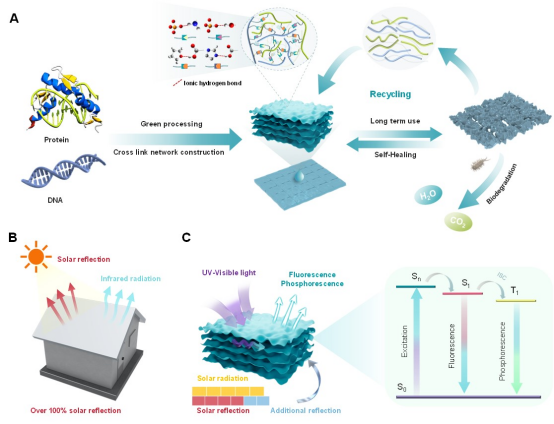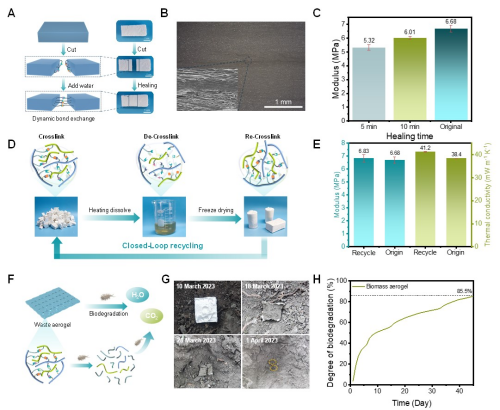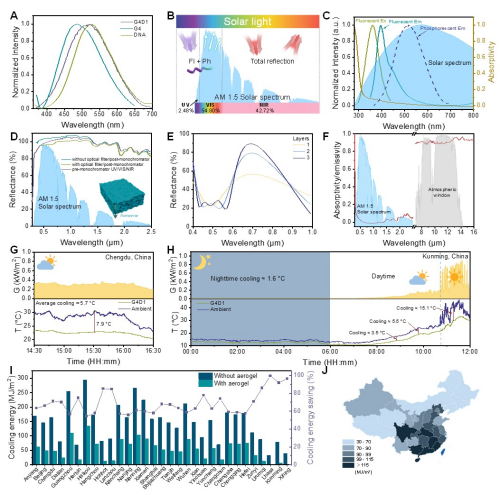Radiative Cooling Aerogel Based on Fluorescence and Phosphorescence
Escalating global climate change and urbanization have led to serious energy, environmental, and security issues. Low carbon and low-energy passive radiative cooling technology is a promising thermal management strategy to address global warming. The traditional radiative cooling materials prepared from petrochemical products often have problems such as low refrigeration efficiency and environmental unfriendliness.
Recently, Professor Hai-Bo Zhao, a member of the research team of Yuzhong Wang (academician of CAE) at the Collaborative Innovation Center for Eco-Friendly and Fire-Safety Polymeric Materials (MoE), Sichuan University, proposed a new strategy of biomass based intrinsic photoluminescent radiative cooling, and developed a recyclable whole biomass radiative cooling aerogel with high solar reflectance. "Passive radiative cooling materials eject infrared radiation through the atmospheric window and into outer space, providing several degrees of cooling relative to ambient temperature. Many passive cooling strategies rely on polymers that do not degrade and may not be recyclable. Maet al. present a biomass-based aerogel that has attractive radiative cooling properties. --- The gelatin- and DNA-based aerogel has a large cooling effect, in part due to fluorescence and phosphorescence. It is also degradable and recyclable, which are important factors when considering the environmental impact of this type of material." (Editor's note)
In addition, "--- we discovered that DNA and gelatin aggregation into an ordered layered aerogel achieves a solar-weighted reflectance of 104.0% in visible light regions through fluorescence and phosphorescence. The cooling effect can reduce ambient temperatures by 16.0°C under high solar irradiance. In addition, the aerogel, efficiently produced at scale through water-welding, displays high reparability, recyclability, and biodegradability, completing an environmentally conscious life cycle.Thisbiomass photoluminescence material is another tool for designing next-generation sustainable cooling."(Abstract)
The research findings were published in Science under the title of "A Photoluminescent Hydrogen-Bonded Biomass Aerogel for Sustainable Radiative Cooling". The first author of the paper is Jian-Wen Ma, a Class 2022 master student from the College of Chemistry, Sichuan University, and Hai-Bo Zhao is the corresponding author.

Fig. 1 Schematic diagram of intrinsic photoluminescence biomass radiative cooling aerogel plate

Fig. 2 Self-healing, recycling and biodegradation ofgelatin- and DNA-basedaerogel

Fig. 3 Radiative cooling mechanism and cooling efficiency ofgelatin- and DNA-basedaerogel
This work was funded by the National Natural Science Foundation of China (52122302) and the Sichuan Provincial Science and Technology Plan Project (2023NSFSC19).
https://www.science.org/doi/10.1126/science.adn5694
